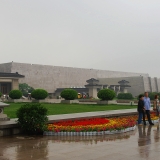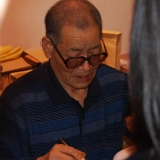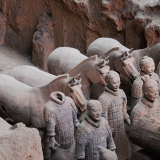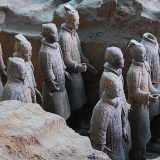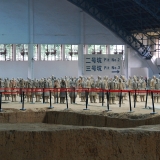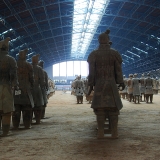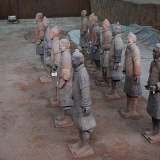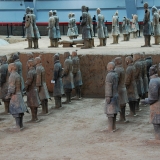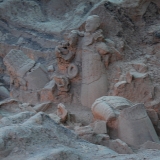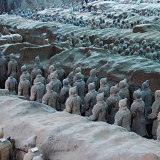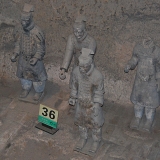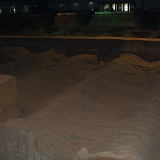The Terracotta Army is a collection of terracotta sculptures depicting the armies of Qin Shi Huang, the first emperor of China. It is a form of funerary art buried with the emperor in 210–209 BCE with the purpose of protecting him in his afterlife. The figures, dating from approximately the late 200s BCE. The Terracotta Army was discovered on 29 March 1974 by a group of farmers; Yang Zhifa, his five brothers, and neighbour Wang Puzhi, who were digging a well. The figures vary in height according to their rank, the tallest being the generals. The figures include warriors, chariots and horses. The Terracotta Army is part of a much larger necropolis. Ground-penetrating radar and core sampling have measured the area to be approximately 98 square kilometers. The necropolis was constructed as a microcosm of the emperor’s imperial palace.
Below is a selection of photos taken during a visit to the Terracotta Army on June 1st, 2010. Click on a small photo for a larger view, then select the next one with the cursor keys or the arrows on either side of the photo.

